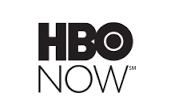The last you heard from me about over-the-top entertainment was here (blog article) where I commented on the growing resolve at HBO that it might eventually be able to bypass its traditional distributio n
n mechanisms (cable TV companies and satellite TV companies) and distribute its programs straight to consumers. This has now reached fruition. Those who wish to be trendy, modern, and up-to-date will want to try out HBO Now as a successor to HBO Go.
mechanisms (cable TV companies and satellite TV companies) and distribute its programs straight to consumers. This has now reached fruition. Those who wish to be trendy, modern, and up-to-date will want to try out HBO Now as a successor to HBO Go.
We have all read about those odd people, presumably poorly socialized nerds, who claim to have “cut the cord” and do not subscribe to cable TV or satellite TV. We sort of vaguely wonder how it is even possible to “cut the cord”, we who are so dependent upon DirectTV or Dish Network or Comcast Cable or Time-Warner Cable or one of the other cable television service providers. We are accustomed to having to purchase a bundle of a couple of dozen channels, or maybe several bundles adding up to a hundred channels, to get the two or three or four channels that we actually watch.
Well the day that you or I might manage to take a deep breath and “cut the cord” is one day closer. HBO had stuck its toe in the water by rolling out HBO Go, a system that would let you watch HBO on your Fire TV stick or Roku stick so long as you could prove that you are paying a cable TV or satellite TV company for a bundle of channels that includes HBO. In other words you could only use HBO Go if you could prove that you had not actually “cut the cord”.
But now HBO offers HBO Now. From the user interface point of view, as you click around in your Fire TV stick menu or Roku stuck menu to find a show to watch, HBO Now is pretty much identical to HBO Go. What’s different is that HBO Now is for those who actually have cut the cord (or who are trying to work up the nerve to cut the cord). You can sign up for HBO Now without having to prove that you are paying a cable TV or satellite TV company for a bundle of channels that includes HBO. You can sign up for HBO Now simply by clicking around a little and paying $15 a month to a retailer. (Oddly, HBO still doesn’t want to actually touch your money directly, but requires that you pay the money to the Android payment system or to Amazon or to any of three other retailers who will in turn pass most of the money along to HBO.)
So for those who wish to be trendy, modern, and up-to-date about “cutting the cord”, the sequence of steps is something like this:
- sign up for HBO Now
- sign up for Amazon Prime
- sign up for Netflix streaming service
- sign up for CBS All Access
- sign up for Hulu
- click around in these five OTT (over-the-top) services, and try to figure out if you think you can survive the withdrawal symptoms of “cutting the cord” with your cable TV or satellite TV provider.
Oh, and maybe connect a pair of rabbit ears to your television to pick up the digital TV signals that are now being broadcast by the television stations where you are located.
One of the key things is that the OTT providers permit you to sign up on a month-to-month basis. Thus, refreshingly, you don’t actually have to sign up for a two-year contract or anything like that. You could sign up for the OTT providers listed above and if later you were to decide it’s not for you, you could cancel them with no ongoing obligation.
(Again the excuse for mentioning this OTT stuff in my blog is that if you are negotiating any kind of license for entertainment or media, you need to think about the possible OTT ramifications of the document that you are working on.)
